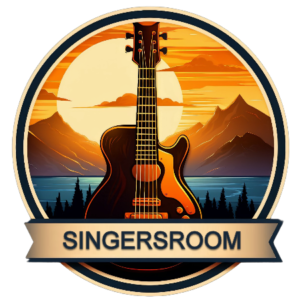Learning how to sing can be a fulfilling and enjoyable experience. Whether you’re a beginner or an experienced singer looking to improve your skills, finding the right singing lessons can make all the difference. Lawrence, Massachusetts, a historic city located just north of Boston, offers a variety of singing lessons for individuals of all ages and skill levels.
To help you navigate the numerous options available, we’ve compiled a list of the 10 best singing lessons near Lawrence. Our selection includes a diverse range of instructors, teaching styles, and genres, ensuring that there is something for everyone.
Each of the instructors on our list has been carefully selected based on their experience, qualifications, and student feedback. Whether you’re interested in classical vocal technique, contemporary music styles, or musical theater, you’re sure to find a great match among our top picks.
Our article provides a brief overview of each instructor’s teaching philosophy, credentials, and areas of expertise, as well as the location and contact information for their studio. By reading this article, you can make an informed decision about which singing lessons are best for you, and start your journey towards becoming a better singer.
1. Steininger Guitar & Music

Website: http://steiningermusic.com/
Address: 14 Hawley St, Lawrence, MA 01843
Steininger Guitar & Music is a highly respected music school located in Lawrence, Massachusetts. They offer private singing lessons with experienced instructors who specialize in various genres, including rock, pop, country, blues, and classical. The school also provides students with access to a state-of-the-art recording studio, which allows them to record their music and develop their skills further.
Steininger Guitar & Music’s approach to teaching is highly personalized, allowing each student to work at their own pace and focus on their individual goals. Their instructors are skilled at identifying a student’s strengths and weaknesses and tailoring their lessons accordingly. This personalized approach ensures that students progress at a comfortable pace and gain confidence in their abilities.
The school’s convenient location on Hawley Street in Lawrence makes it easily accessible for students from surrounding areas. With a great reputation and a range of experienced instructors, Steininger Guitar & Music is a fantastic option for anyone looking to improve their singing skills.
“Tips for Learning How To Sing”
Vocal music has been a significant form of expression throughout human history. From the chants of the ancient Greeks to the contemporary pop songs of today, vocal music has evolved and adapted to reflect the cultural and social changes of its time. In this article, we will take a journey through the world of vocal music, from its classical origins to its modern-day manifestations.
Classical Vocal Music
Classical vocal music encompasses a broad range of musical styles, including opera, oratorio, and art song. One of the earliest forms of vocal music is Gregorian chant, which originated in the Catholic Church in the Middle Ages. Gregorian chant consists of monophonic melodies sung in unison by a choir, with no instrumental accompaniment. The melodies are characterized by their simplicity, with a focus on clear, easy-to-sing intervals.
In the Renaissance period, vocal music continued to evolve, with composers such as Palestrina and Monteverdi introducing more complex harmonies and textures. Opera, which emerged in the 17th century, is a form of classical vocal music that combines singing, acting, and orchestral music. It often features elaborate costumes and sets, as well as dramatic storylines.
Oratorio is another form of classical vocal music that emerged during the Baroque period. It is similar to opera in that it tells a story through music, but it is typically performed without costumes or staging. Oratorios often have religious themes and are often performed in churches.
Art song is a type of vocal music that originated in the 19th century. It is typically sung by a solo vocalist accompanied by a piano. Art songs are often characterized by their intimate, personal nature, with lyrics that explore themes of love, nature, and human emotion.
Contemporary Vocal Music
In the 20th century, vocal music underwent a significant transformation. Popular music genres such as jazz, blues, and rock and roll emerged, incorporating elements of classical vocal music but also incorporating new styles and techniques.
Jazz vocalists such as Billie Holiday and Ella Fitzgerald brought a new level of improvisation and emotional expressiveness to vocal music, with their unique phrasing and use of scat singing. Blues vocalists such as Bessie Smith and Robert Johnson incorporated elements of African American spirituals and gospel music into their singing, creating a new form of vocal music that was both raw and emotionally charged.
Rock and roll, which emerged in the 1950s, represented a significant departure from classical vocal music. It was characterized by its driving rhythms, electric guitars, and often provocative lyrics. Vocalists such as Elvis Presley and Little Richard brought a new level of energy and excitement to vocal music, with their powerful, dynamic performances.
In the 1960s, the Beatles and other British Invasion bands introduced a new form of vocal music that blended elements of rock and roll with folk and pop music. The Beatles, in particular, were known for their intricate harmonies and innovative vocal arrangements.
In the 1970s and 1980s, disco and funk emerged as popular genres of vocal music. Disco was characterized by its upbeat rhythms and infectious melodies, while funk incorporated elements of soul, jazz, and R&B. Vocalists such as Donna Summer and Chaka Khan became known for their powerful, soulful voices and their ability to get people dancing.
In the 1990s and 2000s, hip-hop and R&B became dominant genres of vocal music. Hip-hop vocalists such as Tupac Shakur and Notorious B.I.G. brought a new level of storytelling and social commentary to vocal music, while R&B vocalists such as Whitney Houston and Mariah Carey showcased their impressive vocal ranges and emotional expressiveness.
Today, vocal music continues to evolve and adapt to new trends and styles. Pop music , in particular, has become the dominant form of vocal music in the 21st century, with artists such as Beyoncé, Taylor Swift, and Ariana Grande achieving international fame and success.
Pop music is characterized by its catchy melodies, upbeat rhythms, and relatable lyrics that often explore themes of love, heartbreak, and self-empowerment. Many pop vocalists are also known for their elaborate stage shows and music videos, which often feature intricate choreography and visually stunning sets and costumes.
Contemporary vocal music has also seen a resurgence of interest in traditional styles, such as folk and country music. Artists such as Mumford & Sons and the Dixie Chicks have brought a new level of popularity to these genres, with their unique vocal stylings and contemporary interpretations of traditional themes.
In recent years, vocal music has also embraced technology in new and innovative ways. Auto-Tune, a software tool that corrects pitch in vocal recordings, has become a ubiquitous feature of contemporary pop music, allowing singers to achieve a polished, professional sound. However, some critics argue that it has also contributed to a homogenization of vocal styles, with many singers sounding alike.
Another technology-driven development in vocal music is the rise of virtual idols, or digital singers that are created using artificial intelligence and computer-generated imagery. These virtual idols have gained a significant following in Asia, with artists such as Hatsune Miku and Kizuna AI achieving massive popularity and even performing live concerts.
In conclusion, the world of vocal music has come a long way since its classical origins, with a rich and diverse range of styles and genres that reflect the cultural and social changes of their time. From the simplicity of Gregorian chant to the complex harmonies of opera and the emotional expressiveness of contemporary pop music, vocal music continues to evolve and adapt, always pushing the boundaries of what is possible. Whether performed by humans or digital avatars, vocal music remains a powerful and universal form of expression that has the power to move and inspire audiences around the world.

